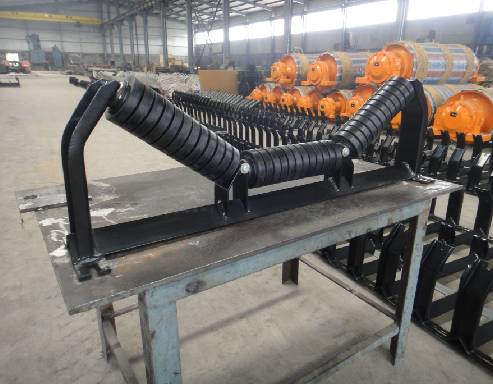 Afrikaans
Afrikaans  Albanian
Albanian  Amharic
Amharic  Arabic
Arabic  Armenian
Armenian  Azerbaijani
Azerbaijani  Basque
Basque  Belarusian
Belarusian  Bengali
Bengali  Bosnian
Bosnian  Bulgarian
Bulgarian  Catalan
Catalan  Cebuano
Cebuano  Corsican
Corsican  Croatian
Croatian  Czech
Czech  Danish
Danish  Dutch
Dutch  English
English  Esperanto
Esperanto  Estonian
Estonian  Finnish
Finnish  French
French  Frisian
Frisian  Galician
Galician  Georgian
Georgian  German
German  Greek
Greek  Gujarati
Gujarati  Haitian Creole
Haitian Creole  hausa
hausa  hawaiian
hawaiian  Hebrew
Hebrew  Hindi
Hindi  Miao
Miao  Hungarian
Hungarian  Icelandic
Icelandic  igbo
igbo  Indonesian
Indonesian  irish
irish  Italian
Italian  Japanese
Japanese  Javanese
Javanese  Kannada
Kannada  kazakh
kazakh  Khmer
Khmer  Rwandese
Rwandese  Korean
Korean  Kurdish
Kurdish  Kyrgyz
Kyrgyz  Lao
Lao  Latin
Latin  Latvian
Latvian  Lithuanian
Lithuanian  Luxembourgish
Luxembourgish  Macedonian
Macedonian  Malgashi
Malgashi  Malay
Malay  Malayalam
Malayalam  Maltese
Maltese  Maori
Maori  Marathi
Marathi  Mongolian
Mongolian  Myanmar
Myanmar  Nepali
Nepali  Norwegian
Norwegian  Norwegian
Norwegian  Occitan
Occitan  Pashto
Pashto  Persian
Persian  Polish
Polish  Portuguese
Portuguese  Punjabi
Punjabi  Romanian
Romanian  Russian
Russian  Samoan
Samoan  Scottish Gaelic
Scottish Gaelic  Serbian
Serbian  Sesotho
Sesotho  Shona
Shona  Sindhi
Sindhi  Sinhala
Sinhala  Slovak
Slovak  Slovenian
Slovenian  Somali
Somali  Spanish
Spanish  Sundanese
Sundanese  Swahili
Swahili  Swedish
Swedish  Tagalog
Tagalog  Tajik
Tajik  Tamil
Tamil  Tatar
Tatar  Telugu
Telugu  Thai
Thai  Turkish
Turkish  Turkmen
Turkmen  Ukrainian
Ukrainian  Urdu
Urdu  Uighur
Uighur  Uzbek
Uzbek  Vietnamese
Vietnamese  Welsh
Welsh  Bantu
Bantu  Yiddish
Yiddish  Yoruba
Yoruba  Zulu
Zulu tail pulley take up
Understanding Tail Pulley Take-Up Mechanisms
The tail pulley take-up is a crucial component in various conveyor systems, playing a vital role in maintaining effective tension and ensuring the smooth operation of the belt. This device is particularly important in industries ranging from mining to manufacturing, where conveyor belts are a primary means of transporting materials.
Understanding Tail Pulley Take-Up Mechanisms
One of the main advantages of an efficient tail pulley take-up system is its ability to ensure optimal belt tension. Proper tension is essential not just for effective material transport but also for preventing excessive wear on the belt and related components. Too much tension may lead to premature failure of the belt and increase the load on the drive system, while too little tension can cause slippage and misalignment, ultimately disrupting operations.
tail pulley take up

There are two primary types of take-up systems manual and automatic. Manual take-ups require operators to physically adjust the tension by moving weights or repositioning pulleys, which can be labor-intensive and time-consuming. In contrast, automatic take-up systems utilize hydraulic or pneumatic mechanisms to adjust tension dynamically as required. This not only improves efficiency but also reduces the need for constant human intervention.
In addition to tension management, the tail pulley take-up mechanism is also responsible for ensuring the alignment of the conveyor belt. Misalignment can lead to uneven wear, increased friction, and potential system failures, making the functionality of the tail pulley take-up integral to the longevity of the conveyor system.
Regular maintenance and inspection of the tail pulley and its take-up function are essential practices in any operational setup. Ensuring that these components are in optimal condition can prevent costly downtime and extend the life of the conveyor system.
In conclusion, the tail pulley take-up mechanism is an often-overlooked but essential element in conveyor belt systems. Understanding its function and maintaining it properly can significantly impact the efficiency and reliability of material handling operations across various industries.
-
Revolutionizing Conveyor Reliability with Advanced Rubber Lagging PulleysNewsJul.22,2025
-
Powering Precision and Durability with Expert Manufacturers of Conveyor ComponentsNewsJul.22,2025
-
Optimizing Conveyor Systems with Advanced Conveyor AccessoriesNewsJul.22,2025
-
Maximize Conveyor Efficiency with Quality Conveyor Idler PulleysNewsJul.22,2025
-
Future-Proof Your Conveyor System with High-Performance Polyurethane RollerNewsJul.22,2025
-
Driving Efficiency Forward with Quality Idlers and RollersNewsJul.22,2025





























